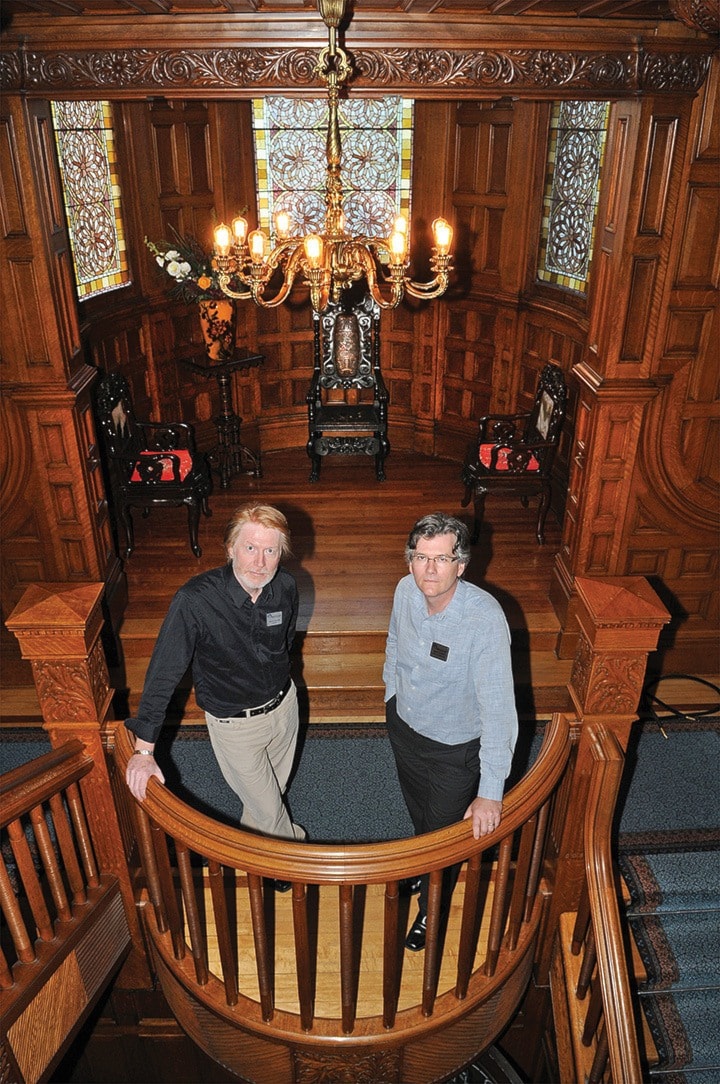Life as a museum curator sometimes mirrors that of as a cold-case detective.
You spend months, years even, chasing down leads, hoping for a break that sheds new light on a case or a story.
For Craigdarroch Castle's Bruce Davies, all clues have so far led to dead ends in his search for the building's original plans.
"It's always like that with the castle," he said with a sigh, surrounded by books, binders, files and assorted historical photos in his third-floor, back room office in the former Dunsmuir family mansion. "There'll be some little bit of information and you feel like you're there – then nothing."
One such instance came when it was learned David Williams, son of the home’s purported architect, Warren H. Williams, displayed two exhibits on Craigdarroch in Portland, Ore. in 1908. While for many years it was believed the exhibits contained the actual building plans from 1889 – the year before the home was completed – later scrutiny this year found they were presentation drawings only, not the final plans.
Not only are the whereabouts of the architectural plans a mystery, there is a dearth of other information about the inside of the mansion.
Such details as how the castle was furnished, the layout of the original kitchen and the use of certain back rooms, for example, are largely unavailable. Incredibly, only one photo remains of the family in the home, that of Robert and Joan Dunsmuir's daughters playing music. And working with the handful of direct descendants to get information has proven largely fruitless.
It's what the late James K. Nesbitt, founder in 1959 of what is now the Craigdarroch Castle Historical Museum Society, called the "conspiracy of silence."
Despite making the occasional connection over the years that has led to better information on physical facets of the mansion – not long ago Davies discovered the original design of a main-floor stained glass window – the logistical problems can be rather vexing when your mandate is to represent the building in as historically accurate a way as possible.
Davies began working in the mid-1970s with the society, which runs and maintains the popular tourist attraction on Joan Crescent high atop the Rockland neighbourhood. In that time, he and other society members and volunteers have cast many a line in the water to try and find more definitive sources of information for the castle's historical displays and restorations.
"I'm pretty patient, but it just becomes worrying, the thought of doing something wrong," Davies said of setting up a room or display based on best guesses. "It's just conjecture. People come to museum to see the truth."
Further challenging the idea of returning the castle to its original state is the fact it has been used for several different purposes since Joan Dunsmuir died in 1908 and the property was sold. It's been a military hospital, housed Victoria College and school board offices and is the former home of the Victoria Conservatory of Music.
Castle society executive director John Hughes has a slightly different focus than his co-worker, with an eye toward enhancing the visitor experience at the castle. While the story of the building's various functions is told onsite, Hughes said, most visitors come expecting to see "Downton Abbey," not a plainly appointed office building.
But, as the man in charge of budgets, he is very conscious of how the society spends money to create its displays.
"The question is, do you commit $50,000 or $100,000 to make that statement (when it might not be accurate)?" he asks. "That's the frustration."
So Hughes, Davies and Elizabeth Hazell, manager of operations and development, are working a different angle to try and shed new light into the mystery of the missing plans, using the society's well-read website and social media to cast the research net a little wider.
Davies has written an essay entitled, "Canada's Craigdarroch Castle: Where are the original building plans?" It talks about the Williams family, Arthur L. Smith – said to have overseen the project after Warren H. Williams’ death in 1888 – and their career paths and offers clues as to where the plans may have ended up. The essay is in PDF format on the website (thecastle.ca/building-plans) and it is being distributed to various architectural associations and other possible sources related to the two men, in hopes someone might take another look at that pile of papers in the basement or perhaps a dusty old file cabinet.
"Maybe there's a conversation out there that's waiting to happen," Hughes said. "If nothing else, it tells people what we're doing."
ddescoteau@vicnews.com
Castle conversation
• Comments, suggestions or ideas about the search for the original building plans for Craigdarroch Castle are welcomed on the society's online blog page (thecastle.ca/building-plans).
